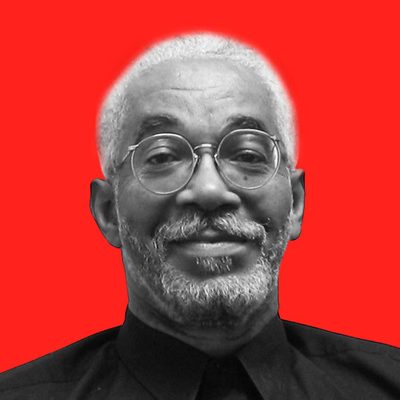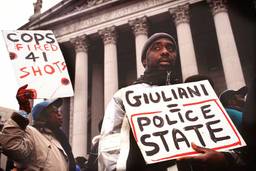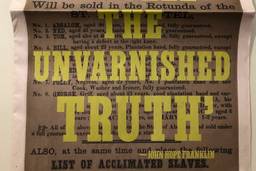Entrapping Inflated Threats
Was the terrorist plot to blow up JFK Airport a threat or a joke?
Salim Muwakkil
Abdul Kadir, one of the four men charged in an alleged terrorist plot to blow up a pipeline that fed fuel tanks at John F. Kennedy International Airport, is a former member of the Guyanese Parliament and former mayor of Linden, Guyana. The fuel line the group allegedly planned to sabotage originates in Linden, N.J. This Linden-Linden axis heavily implicates Kadir.
I am being facetious of course. However, had law enforcement officials made this connection during their announcement of the plot in early June, there is little doubt the national media would have incredulously reported it as a credible link.
In fact, the actual announcement was just marginally more credible. “Had the plot been carried out, it could have resulted in unfathomable damage, deaths and destruction,” Roslynn R. Mauskopf, the U.S. attorney in Brooklyn, said after the news conference detailing the failed plot.
But many security experts doubt the planned attack could have produced the catastrophic consequences presented so dramatically at the press conference. Even the New York Times downplayed the news two days later with the headline “Papers Portray Plot as More Talk Than Action.”
The Department of Justice complaint charges Kadir, Russell Defreitas, Kareem Ibrahim, Abdel Nur and unnamed others, with conspiring to “deliver, place, discharge and detonate an explosive device in, into and against a public transportation system, to wit: John F. Kennedy International Airport.” The alleged ringleader of the plot was Defreitas, a 63-year-old native of Guyana who has been a U.S. citizen since the ’60s. Nur also is Guyanese and Ibrahim is from Trinidad.
But law enforcement officials admit Defreitas was nowhere near capable of mounting such an attack. He is a retired JFK cargo worker who had neither the financial wherewithal, the equipment nor an executable plan. Mark J. Mershon, assistant director in charge of the FBI’s New York office, said, “the ambitions were horrific, the capacities were very limited, but they kept trying.”
Mershon’s statements bring to mind the words of FBI Deputy Director John Pistole, who declared during an equally dramatic news conference in June 2006 in Miami that a terrorist plot to blow up Chicago’s Sears Tower “was more aspirational than operational.” Pistole was referring to the arrest of seven men of Haitian descent charged with conspiring to destroy several buildings, including Sears Tower, by use of explosives.
In fact, there are many other similarities between the two cases. Undercover informants in criminal jeopardy initiated both cases. In the Miami case, the informant was a Middle Eastern native seeking U.S. residential status by aiding the FBI. In the current case, the informant reportedly is a convicted drug dealer whose sentence, according to the complaint, “is pending as part of his cooperation agreement with the government.” In both cases, the undercover informants supplied much of the money and equipment to conduct the so-called surveillance of potential terrorist targets.
The informants also supplied some of the plans for the attacks, as none of the participants in either the Sears Tower or JFK Airport plots had experience in terrorist activities, or any relevant military training. In some instances, the informants acted more as agent provocateurs than accomplices. The Miami informant suggested targets and supplied videotaping equipment, according to the Sept. 6, 2006, Washington Post. In New York, the informant (“the source”) also provided cash, videotaping equipment and transportation, according to the DOJ complaint.
These extenuating circumstances are drowned out by the chest-thumping rhetoric of law enforcement officials eager to make a splash about their success in the “war on terror.” The possibility that the informants were seeking governmental favor by inflating the plots and entrapping the men has likewise been downplayed in the national media, even though the likelihood seems quite plausible.
Of course, perhaps the government is truly disrupting potentially catastrophic terrorist plots. To be sure, the Bush administration’s foreign policy is provoking the kind of global anger that motivates terrorists to attack the United States. As GOP presidential candidate Ron Paul notes, they attacked us for a reason. “We need to look at what we do from the perspective of what would happen if somebody else did it to us.”
There’s no doubt that attacks are best thwarted by busting terrorists’ plans at their incipient stages. Moreover, rigorous police work and effective intelligence sharing seem to be more effective at combsating the terrorist threat than bombastic rhetoric and a bombs-laden foreign policy.
But the various terrorist “plots” exposed by the Bush administration so far have been notable for their lack of credible threat, the central role of a criminal informant and the strong whiff of political opportunism.
Salim Muwakkil is a senior editor of In These Times and host of “The Salim Muwakkil Show” on radio station WVON-AM in Chicago. Muwakkil was also contributing columnist for both the Chicago Sun-Times (1993 – 1997) and the Chicago Tribune (1998 – 2005). He is also a co-founder of Pacifica News’ network daily “Democracy Now” program and served as an adjunct professor at Northwestern University, University of Illinois, the Art Institute of Chicago and Chicago’s Columbia College.









